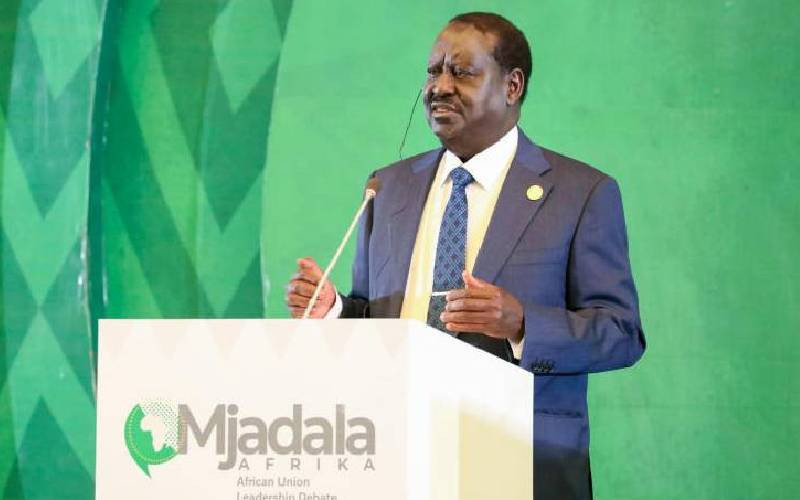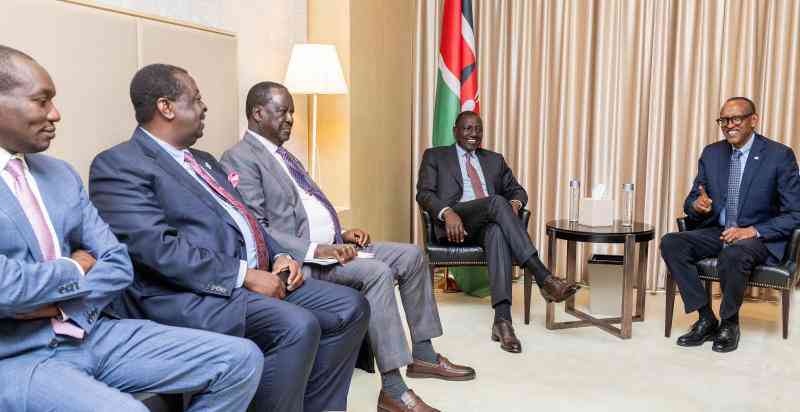
It was a punishing 60 months of blood and sweat. His campaign for the presidency was scathing and enduring. On the campaign trail, President William Ruto could not see what his main opponent, former Prime Minister Raila Odinga, had to offer.
Things did not change in the first month of his presidency. His stance remained much the same. In TV interviews, he would almost imply himself to be a godsend. Dr Ruto would say that no one was more suited for the country’s most important job.
And he would assert that things would be worse if the opposition, which he described as ‘plan less, clueless and rudderless’ had they won the 2022 election. At the height of opposition-led protests last year, Ruto remarked that Raila could not advise him on the economy, one of the reasons the opposition called for the demonstrations.
The Head of State saw the demos as a ploy by the Raila-led Azimio la Umoja-One Kenya coalition to earn key government positions. Ruto and former Deputy President Rigathi Gachagua swore that no such thing would happen. There would be no handshake or mkate nusu, they asserted.
A year later, Ruto has been forced to swallow his words and is dishing out slices of his Kenya Kwanza loaf to the opposition. He ceded five slots to Raila’s Orange Democratic Movement and gave away more positions to allies of former President Uhuru Kenyatta yesterday.
Ruto did not make such concessions when he appointed his first Cabinet, which he dissolved following a youth-led revolt sparked by new tax proposals. He single-handedly appointed the Cabinet, as Gachagua had not negotiated such liberties when partnering up with the president.
But increasingly losing popularity, Ruto found himself plugging punctures suffered during the June/July Generation Z protests and Gachagua’s impeachment.
The onboarding of Raila’s allies was, undoubtedly, aimed at stabilising a government that had grown frail. With Mt Kenya drifting away, Ruto hopes that an alliance with Uhuru can offer some damage control.
The president’s appointment of Raila’s allies also contradicted his earlier stance that there was nothing the opposition could offer.
While Ruto’s actions promise some political gain, they come with some losses, including the control of his government.
“He is not in control. He would not need any help if he was,” said university lecturer of leadership and management Gitile Naituli. “When in control, you give away nothing.”
Prof Naituli said Ruto’s unpopular policies had brought widespread dissatisfaction and he was looking outside to secure stability, which he argued was dangerous.
“If Raila wants to collapse Ruto he can do so at any moment. We have never seen such a situation as previous regimes were stronger. That is why (former President) Mwai Kibaki could afford to do away with Raila and the rest when he lost the 2005 referendum,” added Prof Naituli.
University lecturer Francis Owakah concurred, observing that Ruto’s moves were forced by desperation. “A drowning man clutches at all straws. The ground is very hostile and Ruto is trying to buy loyalty,” said Dr Owakah.
Stay informed. Subscribe to our newsletter
He argued that the Head of State does not seem in charge and ceding control of his government further exposes him.
But political risk analyst Dismas Mokua does not believe the Head of State is ceding any control to the opposition. “President Ruto has the constitutional responsibility to name his cabinet persons who will not only assist in delivering on the Kenya Kwanza manifesto but also capture the aspirations of Chapter Six and Article 10. Cabinet composition must reflect the face of Kenya,” said Mokua.
[email protected]
 The Standard Group Plc is a
multi-media organization with investments in media platforms spanning newspaper
print operations, television, radio broadcasting, digital and online services. The
Standard Group is recognized as a leading multi-media house in Kenya with a key
influence in matters of national and international interest.
The Standard Group Plc is a
multi-media organization with investments in media platforms spanning newspaper
print operations, television, radio broadcasting, digital and online services. The
Standard Group is recognized as a leading multi-media house in Kenya with a key
influence in matters of national and international interest.
 The Standard Group Plc is a
multi-media organization with investments in media platforms spanning newspaper
print operations, television, radio broadcasting, digital and online services. The
Standard Group is recognized as a leading multi-media house in Kenya with a key
influence in matters of national and international interest.
The Standard Group Plc is a
multi-media organization with investments in media platforms spanning newspaper
print operations, television, radio broadcasting, digital and online services. The
Standard Group is recognized as a leading multi-media house in Kenya with a key
influence in matters of national and international interest.










